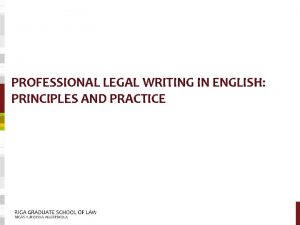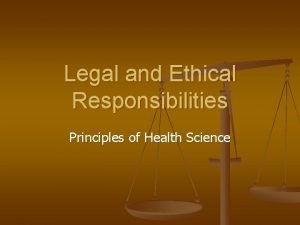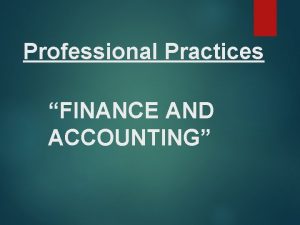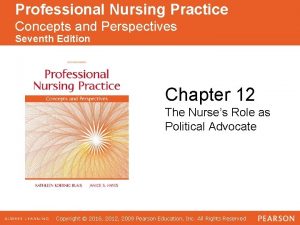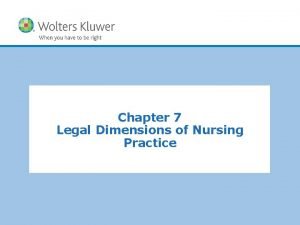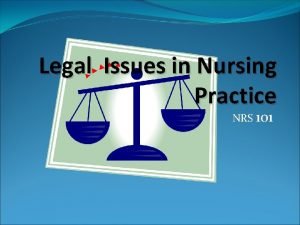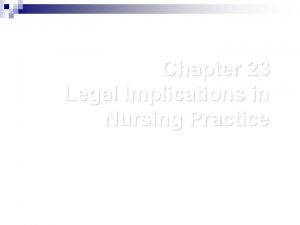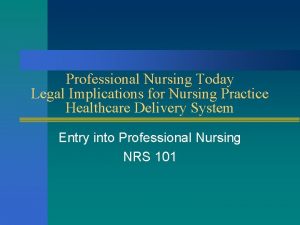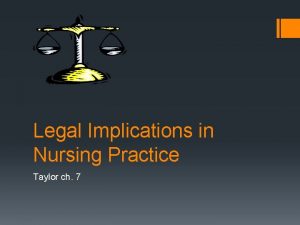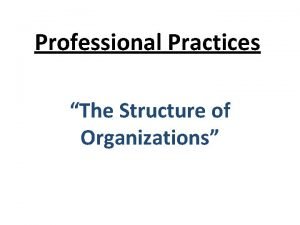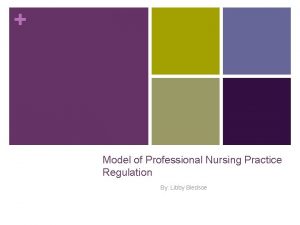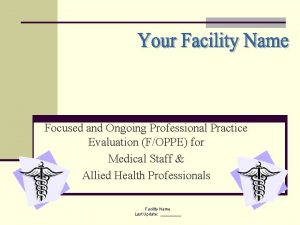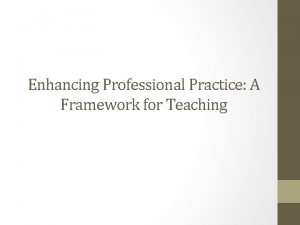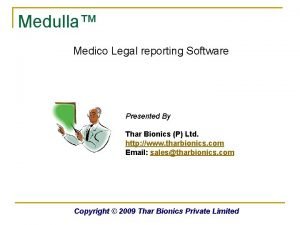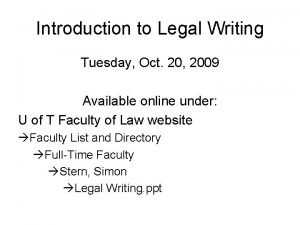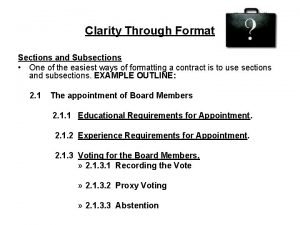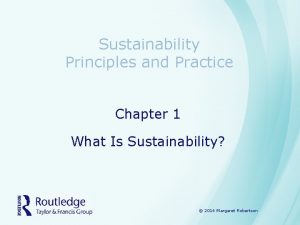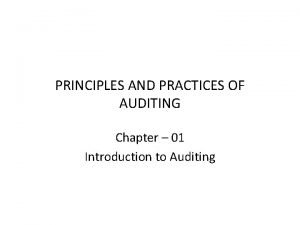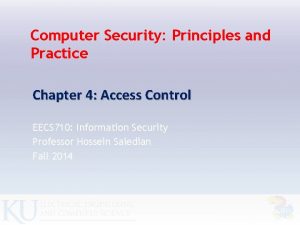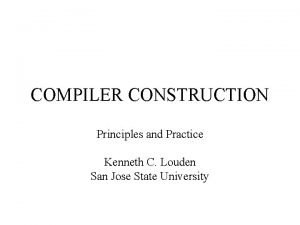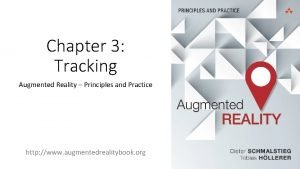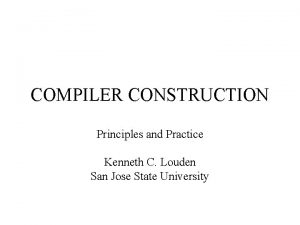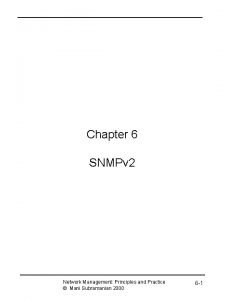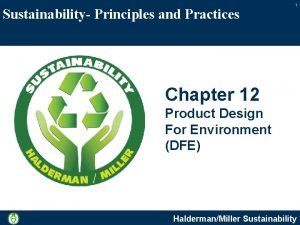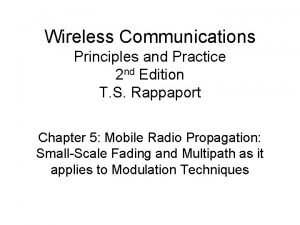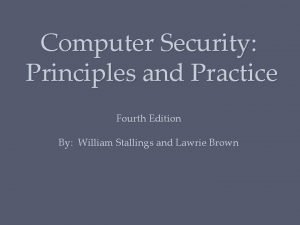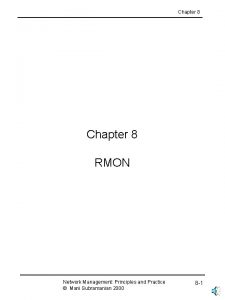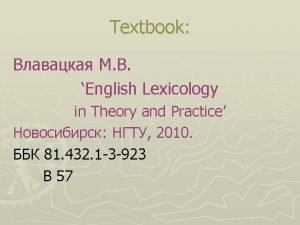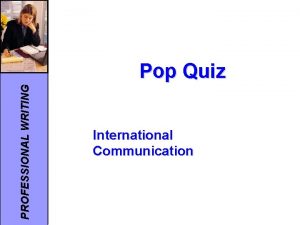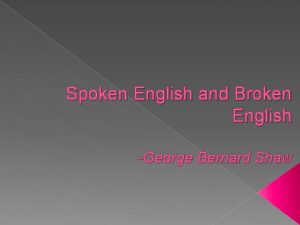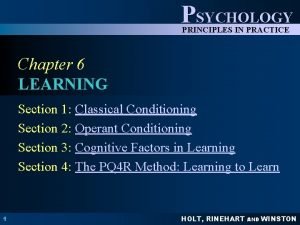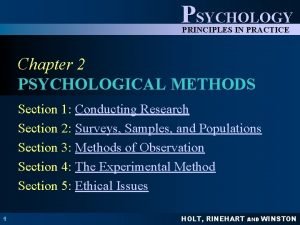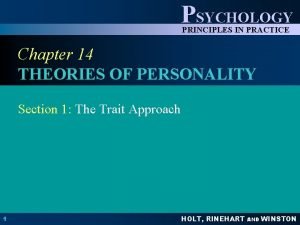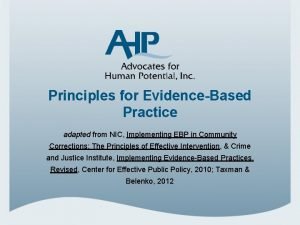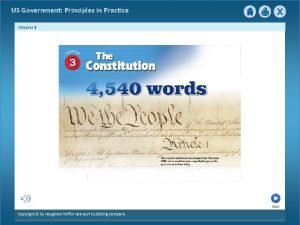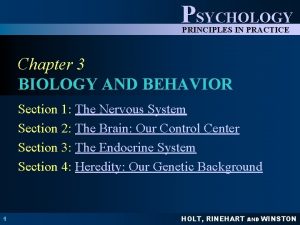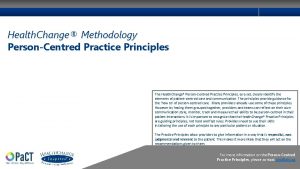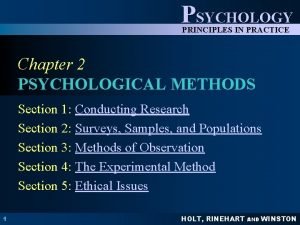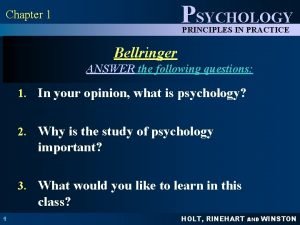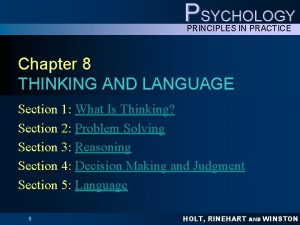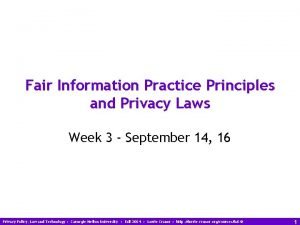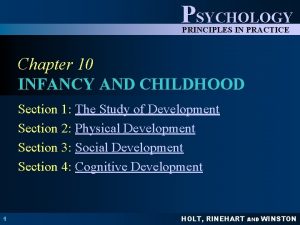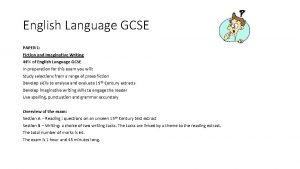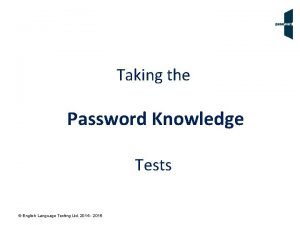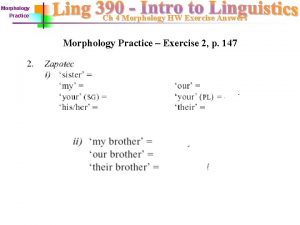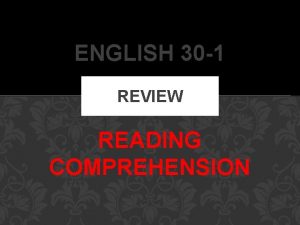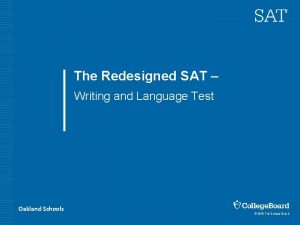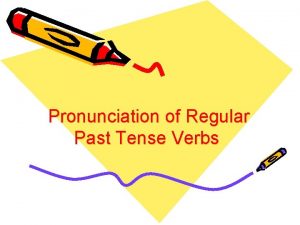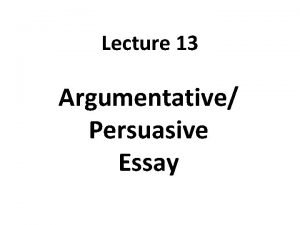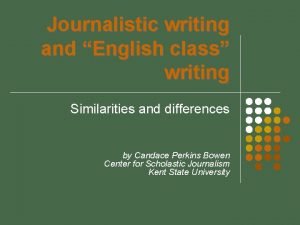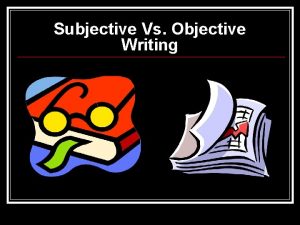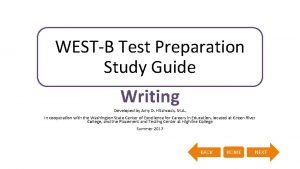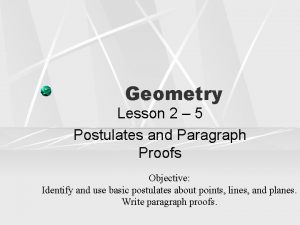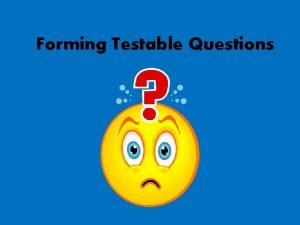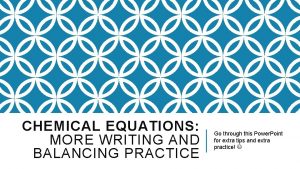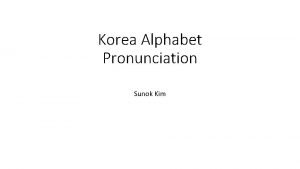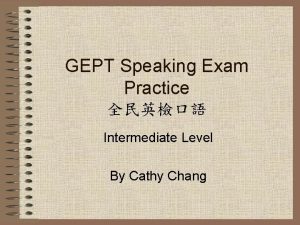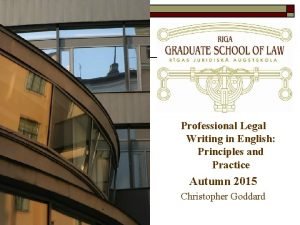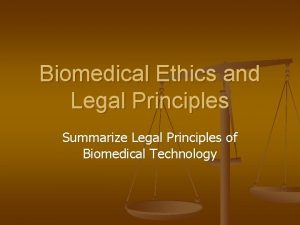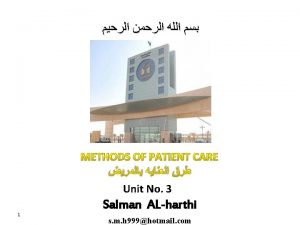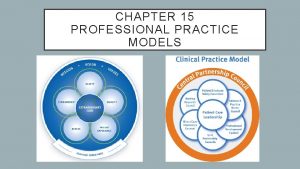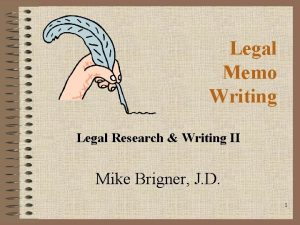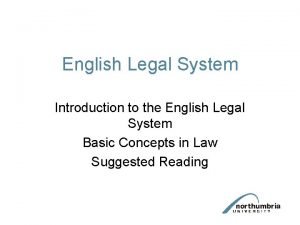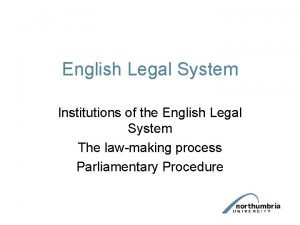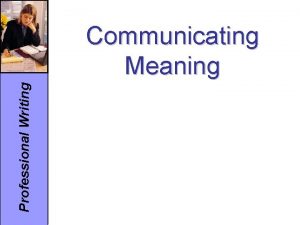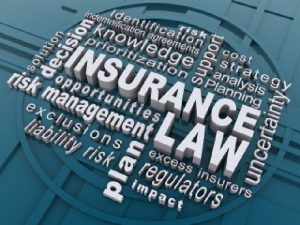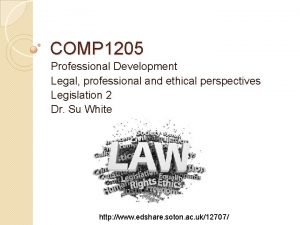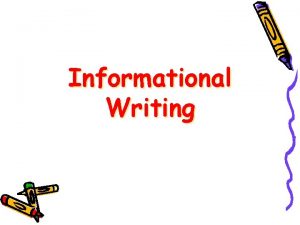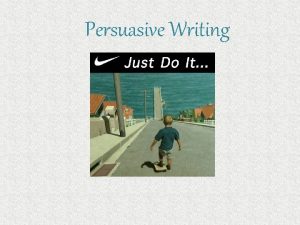PROFESSIONAL LEGAL WRITING IN ENGLISH PRINCIPLES AND PRACTICE


























































































- Slides: 90

PROFESSIONAL LEGAL WRITING IN ENGLISH: PRINCIPLES AND PRACTICE

I. INTRODUCTION: DEFINING EFFECTIVE LEGAL WRITING

LEGAL LANGUAGE:

FUNCTIONS, FEATURES, VARIETIES, CHARACTERISTICS § Functions of legal language § to establish rights and obligations § to distribute information § to enable communication within the legal profession

Universal features of legal language § extreme precision § obscurity, ambiguity § archaism (structures and vocabulary)

Universal features of legal language § § § formalism, ritualism, ceremonialism wordiness, redundancy lengthy and complex sentences (embeddings) impersonal constructions (passive) terms of art, technical terminology

VARIETIES OF LEGAL WRITING 1 § Academic Legal Writing § Juridical Writing § Legislative Writing § (Bhatia)

VARIETIES OF LEGAL WRITING 2 § legislative language, statutory language § language of jurisprudence, courtroom language § language of litigation § bureaucratic language, administrative language

VARIETIES OF LEGAL WRITING 2 § language of legal doctrine § language of private legal documents § language of international organizations § lawyer-client communication

CHARACTERISTICS OF LEGAL ENGLISH § § § common words with specialist meaning old or middle English words Latin words and phrases words of French origin terms of art

CHARACTERISTICS OF LEGAL ENGLISH § § § argot formal words and expressions with flexible meaning extreme precision many words where one will do

WHY LEGAL ENGLISH IS THE WAY IT IS § § Historical reasons Jurisprudential factors Sociological factors Political factors

Characteristics of good legal writing § § § Conciseness Completeness Courtesy Clarity Correctness

Characteristics of good legal writing § § § Accurate + Relevant + Thorough+ Logical Persuasive analytical organized specific and concrete + correct + clear

GUIDELINES FOR BETTER LEGAL ENGLISH § match function and style of the text according to the reader § avoid long and embedded sentences § avoid complex structures § use active instead of passive, if possible

GUIDELINES FOR BETTER LEGAL ENGLISH § avoid double negatives, exceptions to exceptions § avoid unnecessary synonym pairs (e. g. , null and void) § use technical legal terms only when necessary, avoid jargon § avoid Latin and foreign words if possible

A MODEL OF THE WRITING PROCESS:

OVERVIEW § Prewriting: § Clarify objectives Define reader Establish scope

OVERVIEW § Information: § Collect information Tailor it to your audience

OVERVIEW § Organization: § Determine organizational pattern, paragraph topics Compare it to the objective, reader and information

OVERVIEW Drafting: § Put information into sentence form § Put paragraphs into organizational pattern

OVERVIEW § Revision: § Revise globally in terms of objectives, information, and organization. Revise locally (one sentence at a time) for conciseness, coherence, clarity, and correctness.

II. LEGAL WRITING: BASIC PRINCIPLES

Categories and styles of legal writing § § balanced persuasive drafting legal documents academic or journalistic texts

Cross-cultural aspects § legal concepts in different legal systems § different approaches to drafting legal documents § supranational legislation

Cross-cultural aspects § § § History and context Concrete versus abstract Universalism versus particularism Accumulative and analytic Precision

PLAIN ENGLISH FOR LAWYERS § Avoid over-technical terms and over-complicated expression. § Where possible, eliminate Latin and foreign words. § Eliminate archaic terms. § Eliminate legal pairs and triplets.

III. WRITING CORRECTLY: GRAMMAR AS A VITAL TOOL FOR LAWYERS. § Functions of grammar in Legal English

IV. WRITING EFFECTIVELY: ORGANIZING STRUCTURE OF TEXT

EFFECTIVE WRITING: INGREDIENTS § MAIN IDEA § ORGANIZATION § SUPPORTING MATERIAL

EFFECTIVE WRITING: INGREDIENTS § EXPRESSION, WORD CHOICE AND POINT OF VIEW § SPELLING, GRAMMAR, AND PUNCTUATION

Paragraph Organization § Different languages, different cultures : different approaches to structuring texts, including legal texts. § English paragraph structure: logical and organized § First sentence of each paragraph is called the ‘topic sentence’. § This tells the reader what the paragraph is about.

Paragraph Organization § Sentences following either: § support the topic sentence (opinion), or § develop the topic sentence (process or situation) § Paragraphs may also contain sum-up sentence

V. WRITING COHESIVELY: GUIDING THE READER; LINKING IDEAS

Connect Ideas with Care.

Language as a connector § Connectors, language signals, transition words, linking words, signposts, or guideposts § Linguistics: “discourse markers” § Discourse = text § Marker = sign (direction) § Connectors > coherence – natural, reasonable, logical connection.

Connect Ideas with Care. § § § § Language as a connector Result: text easier to understand Connectors often not present in legal and official writing Connectors help the reader Connectors used for transition. Transition = moving from one idea to another Connectors link sentences and paragraphs

TEXT COHERENCE § § § Repeating a Key Term or Phrase Synonyms (!!) Pronouns Transitional Words Sentence Patterns

TRANSITIONAL EXPRESSIONS § § § Amplification or addition Cause and effect; consequence or result Comparison or analogy Contrast or alternative Condition or concession

TRANSITIONAL EXPRESSIONS § § Conclusion Emphasis Illustration or example/clarifying Relationship in time

VI. WRITING CLEARLY: ACCURACY, PUNCTUATION, SUMMARIZING TEXT

Professional Writing Style § Good grammar: step 1 towards good writing. § Communication skills vital to lawyers. § Lawyers judged by written communication skills.

Professional Writing Style § Professional writing skills may be inadequate, e. g. : § Skills acquired during studies: § may not include writing skills at all, or § skills not appropriate to professional writing. § Poor quality writing

Professional Writing Style § Not easy to improve professional writing. § Successful writing is clear, logical, factual, concise, and persuasive.

Professional Writing Style § Appropriate language to show causality or logic § Replace unclear connecting words by specific words with clear meaning § Use affirmative language § Avoid expletives where possible

Professional Writing Style § § Put modifiers where they belong Variation: too much or too little Avoid adjective buildup Don’t shift your point of view

Punctuation Marks: Commas § English does not use commas in the following situations: § Before the word that § I trust that you will return the money I lent you.

English does not use commas § Before the word because § I trust him because he has always paid me in the past. § After the word please § Please do not hesitate to contact me if you have further questions.

VII. WRITING WITH PROFESSIONAL STYLE: TECHNIQUES FOR LAWYERS §

EDITING FOR EMPHASIS: FIVE TECHNIQUES § Technique 1: “Omit needless words”. § Technique 2: Cut sentence endings to create emphasis. § Technique 3: Use sentence beginnings as points of natural prominence. § Technique 4: Prefer action verbs to nominalizations. § Technique 5: Don’t trust modifiers.

SUMMARY OF ELEMENTS OF GOOD LEGAL STYLE § Subject-verb agreement § Contractions: are usually out of place in legal writing. § Enumerations: the best method is first, second and third. § Legal terminology: try to avoid. § Foreignisms: try to use a native English expression.

SUGGESTIONS FOR REVISING AND EDITING § § § Read out loud. Omit needless words. Rely primarily on action verbs and nouns. Check for variety in sentence structure and length. Make a topic sentence outline.

SUGGESTIONS FOR REVISING AND EDITING § § § Transitional words and expressions? Review visual design of text. Is your purpose clear to the reader? Proofread the entire document. Ask a colleague to respond to your draft.

Revisiting some of the important rules § Use verbs, not nouns § Concrete, not abstract § Active or passive? What about the agent? § Obscurity

Specific texts


E-mail § convenient, § inexpensive § easy to use within a networked system.

But note: § § § Consider your audience: what do you want? Why are you writing? Plan and organize ideas. Adapt style and tone according to audience. Never assume an e-mail is private.

. . . and. . . § If important, follow up with fax and/or letter § Some people do not read emails regularly § File copies

Email etiquette

Why do we need email etiquette? § Professionalism: using proper email language conveys a professional image. § Efficiency: emails that get to the point are more effective. § Protection from liability: staff awareness of email risks protects your firm from costly lawsuits.

What are the etiquette rules?

Minutes of a Meeting

What are minutes? § The function of minutes is: § to present information and § to deal with any problems

What should minutes contain? § § § Name of group Type of meeting Date, place, time. Names of attendees + apologies for absence Approval or correction of previous minutes. Reports of members of the group.

Each agenda item should contain: § Summary of views expressed, attributed to speakers by name or the offices they represent and reported accurately. § A clear statement reporting how each issue was resolved, agreement or not, or whether it was deferred for further consideration. § Your name, designation and signature as the recording officer.

Procedure for taking minutes § § § § Make sure you: Know purpose of meeting. Know agenda items. Know names and positions of participants. Know how much detail is expected. Sit near the chair. Write up minutes immediately after meeting.

Report Writing

Layout § § § Preliminary page(s) Introduction Body of report Conclusions, recommendations Acknowledgements Appendices

Types of Reports § Recommendation Reports § Information Reports § Conclusion Reports

Memorandums

What is a memo? § Inter-departmental communication

Memo format § § Clear subject heading Only about one subject Clear and concise Maximum one page.

Memo format § § Names kept brief No addresses but maybe name of department Lack greetings or closings. Initialed by sender, not signed in full.

Types of memos: four types

The information or request memo. § Present main idea § Expand on details § State action required

The problem solving memo § State the problem § Analyze it § Make a recommendation

The persuasion memo § The direct approach, appropriate if you think your reader: § is likely to agree with proposed actions § is likely to be interested in proposals § Start with conclusions first § Provide specific support

The persuasion memo § The indirect approach: appropriate if you think your reader: § will disagree with you § requires some analysis § Start with a neutral statement § Present your case and lead to conclusions

The persuasion memo (indirect approach) § Start with least disagreeable points first § Present your views last § Present recommendations which have been rejected before your own § Use your best evidence last

Proposal Memo or Report . . . should contain the following:

§ Memo Report Reasons for writing § Introductory paragraph outlining structure of memo § Subsequent paragraphs contain relevant issues + disadvantages and advantages § Statement on recommendations or actions to follow

Points to remember when writing memos: § § § Why are you writing? What is the key message? What are readers’ needs? Write subject (the key message) on subject line Begin text by introducing subject Follow pattern appropriate to type of memo Proof-read / edit carefully and sign your name on the ‘from’ line

Client Letters

Professional Responsibilities -- Attorney/Client relationship § Duty to keep client informed § Duty to explain the law in plain English § Duty to discuss all relevant information considerations (negative and positive) § Duty of candor § Duty to preserve client confidentiality

Form and Content: Essential features of client letter: § opening paragraph restates client's questions + summarizes your answer § review relevant facts § explain governing laws § assess situation in light of the law + outline of options for client to consider § recommendations and closing paragraph

Formatting legal advice § Heading § Title of case

Formatting legal advice Body (numbered paragraphs) § Fundamental facts § Key issues § Main conclusions + overall opinion § Reasons: each issue in its logical order → stating your opinion and reasons and giving your advice.

Formatting legal advice § § Conclusion ‘Summary of advice’; ‘Summary of conclusions’. Main points of advice in shortened form. Signature and date.

Legal memoranda § Elements: § heading § summary of important facts § legal issues in brief § discussion of law relevant to legal issues + applying law to facts § conclusion responsive to legal issues.
 Principles of legal writing
Principles of legal writing Professional issues in information security
Professional issues in information security What ishipaa
What ishipaa Professional nursing practice 7th edition
Professional nursing practice 7th edition Finance and accounting in professional practice
Finance and accounting in professional practice Professional nursing practice concepts and perspectives
Professional nursing practice concepts and perspectives Legal dimensions of nursing practice
Legal dimensions of nursing practice Legal issues in nursing practice
Legal issues in nursing practice Legal implications of nursing documentation
Legal implications of nursing documentation Trends and issues in nursing
Trends and issues in nursing Legal implications in nursing practice
Legal implications in nursing practice Legal principles in healthcare
Legal principles in healthcare Professional practice days
Professional practice days Structure of organization in professional practice
Structure of organization in professional practice What do you mean by professional
What do you mean by professional Model of professional nursing practice regulation
Model of professional nursing practice regulation Ongoing professional practice evaluation template
Ongoing professional practice evaluation template Enhancing professional practice
Enhancing professional practice Danielson framework components
Danielson framework components Tpess professional practice goal examples
Tpess professional practice goal examples Enhancing professional practice a framework for teaching
Enhancing professional practice a framework for teaching Professional practice guidelines moe
Professional practice guidelines moe It is to conform to accepted professional practice
It is to conform to accepted professional practice Myeplg website
Myeplg website Legal english brescia
Legal english brescia Medico software
Medico software Umbrella paragraph legal writing
Umbrella paragraph legal writing Numbering a tabulated list in legal writing
Numbering a tabulated list in legal writing Sustainability principles and practice
Sustainability principles and practice Secondary objective of auditing
Secondary objective of auditing Computer security principles and practice 4th edition
Computer security principles and practice 4th edition Computer security principles and practice solutions
Computer security principles and practice solutions Kenneth c. louden
Kenneth c. louden Augmented reality: principles and practice
Augmented reality: principles and practice Tourism
Tourism Compiler construction: principles and practice
Compiler construction: principles and practice Snmpv
Snmpv Sustainability principles and practice
Sustainability principles and practice Computer security principles and practice 4th edition
Computer security principles and practice 4th edition Telecommunication network management lecture notes
Telecommunication network management lecture notes Wireless communications: principles and practice
Wireless communications: principles and practice Computer security principles and practice
Computer security principles and practice Network management principles and practice
Network management principles and practice English lexicology theory and practice
English lexicology theory and practice What is professional context
What is professional context Professional writing quiz
Professional writing quiz Professional email response examples
Professional email response examples How to write a professional memo
How to write a professional memo Spoken english and broken english g.b. shaw summary
Spoken english and broken english g.b. shaw summary Different between american english and british english
Different between american english and british english British and american word differences
British and american word differences Spoken english and broken english summary
Spoken english and broken english summary American english
American english Regression psychology
Regression psychology Psychology principles in practice
Psychology principles in practice Regression psychology
Regression psychology Principles of effective practice
Principles of effective practice Principles of evidence based practice
Principles of evidence based practice United states government: principles in practice solutions
United states government: principles in practice solutions Psychology principles in practice
Psychology principles in practice Person centred practice principles
Person centred practice principles Chapter 2 psychological methods
Chapter 2 psychological methods Psychology principles in practice chapter 1
Psychology principles in practice chapter 1 Psychology principles in practice
Psychology principles in practice Development occurs in a relatively orderly sequence
Development occurs in a relatively orderly sequence Fair information practice principles
Fair information practice principles Coherent curriculum
Coherent curriculum Psychology principles in practice
Psychology principles in practice Is english language paper 1 fiction or nonfiction
Is english language paper 1 fiction or nonfiction Academic english reading and writing across the disciplines
Academic english reading and writing across the disciplines Password knowledge test practice
Password knowledge test practice Ready for invalsi oup
Ready for invalsi oup Hw
Hw English 30-1 reading comprehension practice test
English 30-1 reading comprehension practice test How often do you practice your english
How often do you practice your english Standard english conventions sat practice
Standard english conventions sat practice English reading practice
English reading practice Persuasive vs argumentative
Persuasive vs argumentative Informal and formal writing examples
Informal and formal writing examples Similarities of academic writing and technical writing
Similarities of academic writing and technical writing Venn diagram literature and journalism
Venn diagram literature and journalism Subjective style of writing
Subjective style of writing West b test
West b test Slope intercept form
Slope intercept form Postulates and paragraph proofs
Postulates and paragraph proofs Writing testable questions practice
Writing testable questions practice Lesson 4 slope intercept form
Lesson 4 slope intercept form Practice writing chemical equations
Practice writing chemical equations Korea alphabet
Korea alphabet Iowa pearson access next
Iowa pearson access next Gept speaking questions
Gept speaking questions
